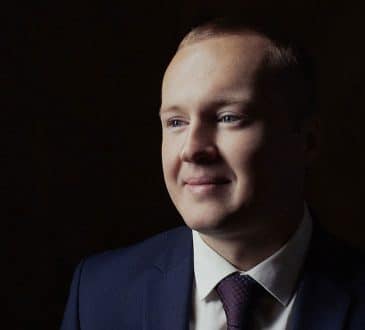Our Political Dumbbell Curve Is Creating Deep Divisions

For years, our political system has largely operated as a bell curve. While some fell on the extremes of liberal and conservative ideologies, most politicians gravitated toward the middle. History has relied on the crossing of party lines to take critical legislative action. For example, during the Civil Rights Movement, liberal Republications worked together with Democrats to support landmark legislation.
Now, however, we’ve devolved into a “dumbbell curve,” in which everyone is on either extreme and no one represents the middle. The result has been that these extreme, homogenous sides have cannibalized reasonable political discourse and shifted the norm from an expectation of working together to a dynamic where each side strives to win at all costs. Our increasing political segregation threatens to tear our unified society apart.
Looking at voting patterns of the 2016 presidential election, this polarization didn’t just occur within political affiliation. It also became a function of demographic identity. People who voted for Donald Trump overwhelmingly represented the dominant identity groups: 54 percent of whites, 52 percent of men and 58 percent of Christians. Clinton voters, by contrast, represented non-dominant groups: 91 percent of blacks, 54 percent of women, 66 percent of Latinos, 65 percent of Asians, 71 percent of Jews, and 78 percent of LGBTQ voters.
The difference in moving from a political bell curve to a dumbbell curve represents a critical shift. While before, we evaluated people based on issues, which was a more impersonal measure, now we evaluate them based on identity, which objectifies people as “other.” We no longer take the position of “I disagree with you on this point.” Instead our position has become: “You are one of them!” It is one thing to hold an individual accountable for their point of view or behaviors, but something else entirely when we turn that into “guilt by association.”
This mindset not only impacts our political lives, but has begun to manifest in community segregation. The need to connect with those that we relate to, and at the same time stay from the other, is creating a degree of tribalism that we haven’t experienced in centuries.
It’s natural, of course, for humans to feel more comfortable with people in groups to which we belong. It makes us feel safe because we know what to expect. This extends to our places of worship, our social organizations and our exposure to media and social media, which all tend to group us with like-minded people. However, if we’re to transcend the division that we’re now experiencing and move toward a more peaceful and equitable social order, we need to find a way to connect across differences.
That doesn’t mean that we can’t take strong positions. Decent people can disagree and debate strenuously. But debating is one thing; not granting the other the right to a point of view is another entirely.
We limit the fullness of life if we only relate to people like ourselves. When we find ways to relate to others, it gives us new ideas, new insights, and a deeper, richer perspective on life. And, yes, being challenged by others forces us to consider our own viewpoint in a more rigorous way. For communities and organizations to thrive, they must create a sense of belonging for all types of members. And, most importantly, the experiment that is democracy cannot work without bridging across differences.
Use these ideas to find common ground:
- Start by understanding your own biases. If you make a conscious choice to become more civil in our society, you have to develop a deeper understanding of your own biases. Stop to ask yourself: “Am I thinking or am I reacting?” Instead of relying on a knee-jerk reaction, open yourself to uncovering new information.
- Get to know the other point of view. It’s critically important that, rather than focusing only on what people on the other side of the political divide believe, you focus on why they believe it. If you get to know their point of view, from their personal framework, you may have ways to find common ground that you can’t see when you’re only committed to being right.
- Don’t conflate a voter with everything his or her candidate stands for. Just because somebody voted for a candidate doesn’t mean that person supports everything about the candidate. Avoid objectifying people according to the candidate they support and break away from stereotyping.
- Take “the other” to lunch. Reach out to individuals who represent the other point of view to get a better understanding of what they’re thinking and feeling. Start by inviting someone to lunch, and express curiosity toward their stance on an issue or candidate. Focus on listening and learning rather than defending or persuading. Try to understand not only what the person believes, but why he or she believes it.
- Work on sustainable system change. Get involved with organizations trying to change systemic factors that contribute to societal discord. This could mean working to ensure voting rights, limit money in politics, create open dialogue to break “us vs. them” factions, or whatever can lead to more equitable systems. With civil society at stake, you can no longer afford to be a bystander.
Written by Howard Ross.
Have you read?
# Best Cities In The World For Shopping In 2019.
# Best Law Schools In The World, 2019.
# Best Film Schools In The World For 2019.
# Best Music Schools In The World For 2019.
Bring the best of the CEOWORLD magazine's global journalism to audiences in the United States and around the world. - Add CEOWORLD magazine to your Google News feed.
Follow CEOWORLD magazine headlines on: Google News, LinkedIn, Twitter, and Facebook.
Copyright 2025 The CEOWORLD magazine. All rights reserved. This material (and any extract from it) must not be copied, redistributed or placed on any website, without CEOWORLD magazine' prior written consent. For media queries, please contact: info@ceoworld.biz








